Oxidation Protective Hybrid Coating for Thermoelectric Materials
Abstract
:1. Introduction
2. Materials and Methods
3. Results and Discussion
3.1. Mg-Silicide (Solvent-Based Coating)
3.2. Tetrahedrite (Water-Based Coating)
4. Conclusions
Author Contributions
Funding
Conflicts of Interest
References
- Vineis, C.J.; Shakouri, A.; Majumdar, A.; Kanatzidis, M.G. Nanostructured thermoelectrics: big efficiency gains from small features. Adv. Mater. 2010, 22, 3970–3980. [Google Scholar] [CrossRef] [PubMed]
- Snyder, G.J.; Toberer, E.S. Complex thermoelectric materials. Nat. Mater. 2008, 7, 105–114. [Google Scholar] [CrossRef] [PubMed]
- Sootsman, J.R.; Chung, D.Y.; Kanatzidis, M.G. New and old concepts in thermoelectric materials. Angew. Chem. Int. Edit. 2009, 48, 8616–8639. [Google Scholar] [CrossRef]
- Alam, H.; Ramakrishna, S. A review on the enhancement of figure of merit from bulk to nano-thermoelectric materials. Nano Energy 2013, 2, 190–212. [Google Scholar] [CrossRef]
- Srinivasan, B.; Gucci, F.; Boussard-Pledel, C.; Chevire, F.; Reece, M.J.; Tricot, S.; Calvez, L.; Bureau, B. Enhancement in thermoelectric performance of n-type Pb-deficit Pb-Sb-Te alloys. J. Alloy. Compd. 2017, 729, 198–202. [Google Scholar] [CrossRef] [Green Version]
- Srinivasan, B.; Boussard-Pledel, C.; Bureau, B. Thermoelectric performance of codoped (Bi, In)-GeTe and (Ag, In, Sb)-SnTe materials processed by Spark Plasma Sintering. Mater. Lett. 2018, 230, 191–194. [Google Scholar] [CrossRef]
- Srinivasan, B.; Gautier, R.; Gucci, F.; Fontaine, B.; Halet, J.F.; Chevire, F.; Boussard-Pledel, C.; Reece, M.J.; Bureau, B. Impact of Coinage Metal Insertion on the Thermoelectric Properties of GeTe Solid-State Solutions. J. Phys. Chem. C 2018, 122, 227–235. [Google Scholar] [CrossRef]
- He, J.Q.; Kanatzidis, M.G.; Dravid, V.P. High performance bulk thermoelectrics via a panoscopic approach. Mater. Today 2013, 16, 166–176. [Google Scholar] [CrossRef]
- Li, J.F.; Pan, Y.; Wu, C.F.; Sun, F.H.; Wei, T.R. Processing of advanced thermoelectric materials. Sci. China Technol. Sci. 2017, 60, 1347–1364. [Google Scholar] [CrossRef]
- Gucci, F.; Saunders, T.G.; Reece, M.J. In-situ synthesis of n-type unfilled skutterudite with reduced thermal conductivity by hybrid flash-spark plasma sintering. Scripta Mater. 2018, 157, 58–61. [Google Scholar] [CrossRef]
- Srinivasan, B.; Gellé, A.; Gucci, F.; Boussard-Pledel, C.; Fontaine, B.; Gautier, R.; Halet, J.-F.; Reece, M.; Bureau, B. Realizing a Stable High Thermoelectric zT ~ 2 over a Broad Temperature Range in Ge1−x−yGaxSbyTe via Band Engineering and Hybrid Flash-SPS Processing. Inorg. Chem. Front. 2018, 63–73. [Google Scholar] [CrossRef]
- Xie, H.Y.; Su, X.L.; Yan, Y.G.; Liu, W.; Chen, L.J.; Fu, J.F.; Yang, J.H.; Uher, C.; Tang, X.F. Thermoelectric performance of CuFeS2+2x composites prepared by rapid thermal explosion. Npg Asia Mater. 2017, 9, e390. [Google Scholar] [CrossRef]
- Yang, F.; Fan, X.A.; Rong, Z.Z.; Cai, X.Z.; Li, G.Q. Lattice thermal conductivity reduction due to in situ-generated nano-phase in Bi0.4Sb1.6Te3 alloys by microwave-activated hot pressing. J. Electron. Mater. 2014, 43, 4327–4334. [Google Scholar] [CrossRef]
- Srinivasan, B.; Fontaine, B.; Gucci, F.; Dorcet, V.; Saunders, T.G.; Yu, M.; Chevire, F.; Boussard-Pledel, C.; Halet, J.F.; Gautier, R.; et al. Effect of the Processing Route on the Thermoelectric Performance of Nanostructured CuPb18SbTe20. Inorg. Chem. 2018, 57, 12976–12986. [Google Scholar] [CrossRef] [PubMed]
- Fedorov, M.I.; Isachenko, G.N. Silicides: Materials for thermoelectric energy conversion. Jpn. J. Appl. Phys. 2015, 54. [Google Scholar] [CrossRef] [Green Version]
- Chetty, R.; Bali, A.; Mallik, R.C. Tetrahedrites as thermoelectric materials: an overview. J. Mater. Chem. C 2015, 3, 12364–12378. [Google Scholar] [CrossRef]
- LeBlanc, S. Thermoelectric generators: Linking material properties and systems engineering for waste heat recovery applications. Sustain. Mater. Technol. 2014, 1–2, 26–35. [Google Scholar] [CrossRef]
- Morris, R.G.; Redin, R.D.; Danielson, G.C. Semiconducting Properties of Mg2Si Single Crystals. Phys. Rev. 1958, 109, 1909–1915. [Google Scholar] [CrossRef]
- Tani, J.; Kido, H. Thermoelectric properties of Bi-doped Mg2Si semiconductors. Phys. B 2005, 364, 218–224. [Google Scholar] [CrossRef]
- Liu, W.; Tang, X.F.; Li, H.; Yin, K.; Sharp, J.; Zhou, X.Y.; Uher, C. Enhanced thermoelectric properties of n-type Mg2.16(Si0.4Sn0.6)1−ySby due to nano-sized Sn-rich precipitates and an optimized electron concentration. J. Mater. Chem. 2012, 22, 13653–13661. [Google Scholar] [CrossRef]
- Liu, W.; Zhang, Q.; Yin, K.; Chi, H.; Zhou, X.Y.; Tang, X.F.; Uher, C. High figure of merit and thermoelectric properties of Bi-doped Mg2Si0.4Sn0.6 solid solutions. J. Solid State Chem. 2013, 203, 333–339. [Google Scholar] [CrossRef]
- Zaitsev, V.K.; Fedorov, M.I.; Gurieva, E.A.; Eremin, I.S.; Konstantinov, P.P.; Samunin, A.Y.; Vedernikov, M.V. Highly effective Mg2Si1−xSnx thermoelectrics. Phys. Rev. B 2006, 74. [Google Scholar] [CrossRef]
- Chen, L.X.; Jiang, G.Y.; Chen, Y.; Du, Z.L.; Zhao, X.B.; Zhu, T.J.; He, J.; Tritt, T.M. Miscibility gap and thermoelectric properties of ecofriendly Mg2Si1−xSnx (0.1 ≤ x ≤ 0.8) solid solutions by flux method. J. Mater. Res. 2011, 26, 3038–3043. [Google Scholar] [CrossRef]
- You, S.W.; Shin, D.K.; Kim, I.H. The effects of Sb on the thermoelectric properties of Mg2Si1−xGex prepared by using solid-state synthesis. J. Korean. Phys. Soc. 2014, 64, 1346–1350. [Google Scholar] [CrossRef]
- Khan, A.U.; Vlachos, N.; Kyratsi, T. High thermoelectric figure of merit of Mg2Si0.55Sn0.4Ge0.05 materials doped with Bi and Sb. Scripta Mater. 2013, 69, 606–609. [Google Scholar] [CrossRef]
- Gao, P.; Berkun, I.; Schmidt, R.D.; Luzenski, M.F.; Lu, X.; Sarac, P.B.; Case, E.D.; Hogan, T.P. Transport and mechanical properties of high-ZT Mg2.08Si0.4−x Sn0.6Sbx thermoelectric materials. J. Electron. Mater. 2014, 43, 1790–1803. [Google Scholar] [CrossRef]
- Skomedal, G.; Burkov, A.; Samunin, A.; Haugsrudd, R.; Middletona, H. High temperature oxidation of Mg2(Si-Sn). J. Corros. Sci. 2016, 111, 325–333. [Google Scholar] [CrossRef]
- Sondergaard, M.; Christensen, M.; Borup, K.A.; Yin, H.; Iversen, B.B. Thermal stability and thermoelectric properties of Mg2Si0.4Sn0.6 and Mg2Si0.6Sn0.4. J. Mater. Sci. 2013, 48, 2002–2008. [Google Scholar] [CrossRef]
- Yin, K.; Zhang, Q.; Zheng, Y.; Su, X.; Tang, X.; Uher, C. Thermal stability of Mg2Si0.3Sn0.7 under different heat treatment conditions. J. Mater. Chem. C 2015, 3, 10381–10387. [Google Scholar] [CrossRef]
- Tani, J.; Takahashi, M.; Kido, H. Thermoelectric properties and oxidation behaviour of magnesium silicide. In IOP Conference Series: Materials Science and Engineering; IOP Publishing: Bristol, UK, 2011; Volume 18, p. 142013. [Google Scholar] [CrossRef]
- Jeanloz, R.; Johnson, M.L. A Note on the bonding, optical-spectrum and composition of tetrahedrite. Phys. Chem. Miner. 1984, 11, 52–54. [Google Scholar] [CrossRef]
- Du, B.L.; Chen, K.; Yan, H.X.; Reece, M.J. Efficacy of lone-pair electrons to engender ultralow thermal conductivity. Scripta Mater. 2016, 111, 49–53. [Google Scholar] [CrossRef]
- Suekuni, K.; Tsuruta, K.; Ariga, T.; Koyano, M. Thermoelectric properties of mineral tetrahedrites Cu10Tr2Sb4S13 with low thermal conductivity. Appl. Phys. Express 2012, 5. [Google Scholar] [CrossRef]
- Wuensch, B.J. The crystal structure of tetrahedrite, Cu12Sb4S13. Z. Krist. Cryst. Mater. 1964, 119, 437–453. [Google Scholar] [CrossRef]
- Van Embden, J.; Tachibana, Y. Synthesis and characterisation of famatinite copper antimony sulfide nanocrystals. J. Mater. Chem. 2012, 22, 11466–11469. [Google Scholar] [CrossRef]
- Du, B.L.; Zhang, R.Z.; Chen, K.; Mahajan, A.; Reece, M.J. The impact of lone-pair electrons on the lattice thermal conductivity of the thermoelectric compound CuSbS2. J. Mater. Chem. A 2017, 5, 3249–3259. [Google Scholar] [CrossRef]
- Chen, K.; Du, B.L.; Bonini, N.; Weber, C.; Yan, H.X.; Reece, M.J. Theory-guided synthesis of an eco-friendly and low-cost copper based sulfide thermoelectric material. J. Phys. Chem. C 2016, 120, 27135–27140. [Google Scholar] [CrossRef]
- Chen, K.; Di Paola, C.; Du, B.L.; Zhang, R.Z.; Laricchia, S.; Bonini, N.; Weber, C.; Abrahams, I.; Yan, H.X.; Reece, M. Enhanced thermoelectric performance of Sn-doped Cu3SbS4. J. Mater. Chem. C 2018, 6, 8546–8552. [Google Scholar] [CrossRef]
- Du, B.; Zhang, R.; Liu, M.; Chen, K.; Zhang, H.; Reece, M.J. Crystal structure and improved thermoelectric performance of iron stabilized cubic Cu3SbS3 compound. J. Mater. Chem. C 2019, 7, 394–404. [Google Scholar] [CrossRef]
- Lu, X.; Morelli, D.T.; Xia, Y.; Zhou, F.; Ozolins, V.; Chi, H.; Zhou, X.Y.; Uher, C. High performance thermoelectricity in earth-abundant compounds based on natural mineral tetrahedrites. Adv. Energy Mater. 2013, 3, 342–348. [Google Scholar] [CrossRef]
- Braga, M.H.; Ferreira, J.A.; Lopes, C.; Malheiros, L.F. Phase transitions in the Cu-Sb-S system. Mater. Sci. Forum 2008, 587–588, 435–439. [Google Scholar] [CrossRef]
- Barbier, T.; Lemoine, P.; Gascoin, S.; Lebedev, O.I.; Kaltzoglou, A.; Vaqueiro, P.; Powell, A.V.; Smith, R.I.; Guilmeau, E. Structural stability of the synthetic thermoelectric ternary and nickel-substituted tetrahedrite phases. J. Alloy. Compd. 2015, 634, 253–262. [Google Scholar] [CrossRef]
- Goncalves, A.P.; Lopes, E.B.; Montemor, M.F.; Monnier, J.; Lenoir, B. Oxidation Studies of Cu12Sb3.9Bi0.1S10Se3 tetrahedrite. J. Electron. Mater. 2018, 47, 2880–2889. [Google Scholar] [CrossRef]
- Salvo, M.; Smeacetto, F.; D’Isanto, F.; Viola, G.; Demitri, P.; Gucci, F.; Reece, M.J. Glass-ceramic oxidation protection of higher manganese silicide thermoelectrics. J. Eur. Ceram. Soc. 2018, 39, 66–71. [Google Scholar] [CrossRef]
- Liu, W.; Tang, X.F.; Li, H.; Sharp, J.; Zhou, X.Y.; Uher, C. Optimized thermoelectric properties of Sb-doped Mg2(1+z)Si0.5−ySn0.5Sby through Adjustment of the Mg Content. Chem. Mater. 2011, 23, 5256–5263. [Google Scholar] [CrossRef]
- Du, Z.L.; Zhu, T.J.; Chen, Y.; He, J.; Gao, H.L.; Jiang, G.Y.; Tritt, T.M.; Zhao, X.B. Roles of interstitial Mg in improving thermoelectric properties of Sb-doped Mg2Si0.4Sn0.6 solid solutions. J. Mater. Chem. 2012, 22, 6838–6844. [Google Scholar] [CrossRef]
- Harish, S.; Sivaprahasam, D.; Battabyal, M.; Gopalan, R. Phase stability and thermoelectric properties of Cu10.5Zn1.5Sb4S13 tetrahedrite. J. Alloy. Compd. 2016, 667, 323–328. [Google Scholar] [CrossRef]


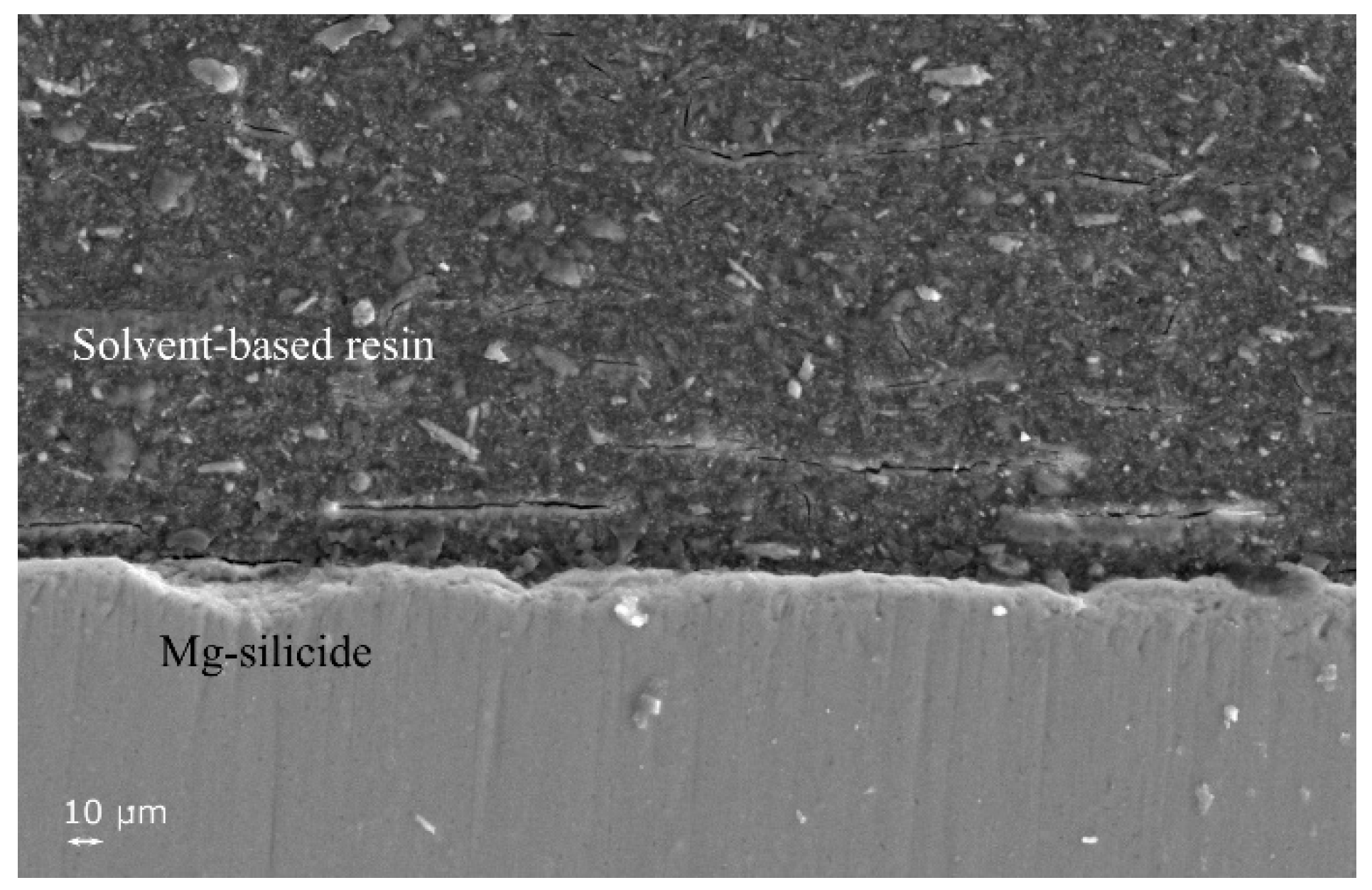
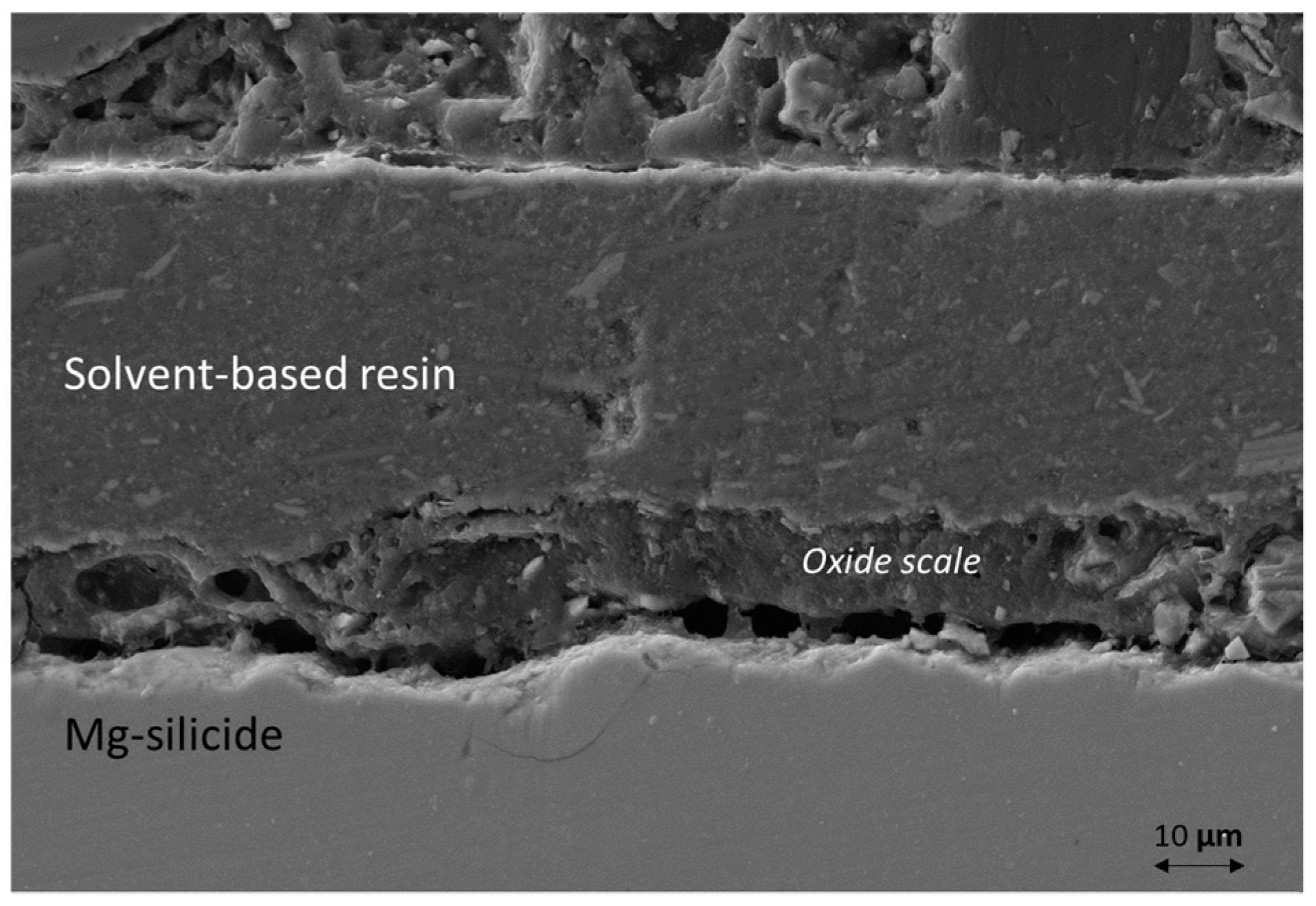
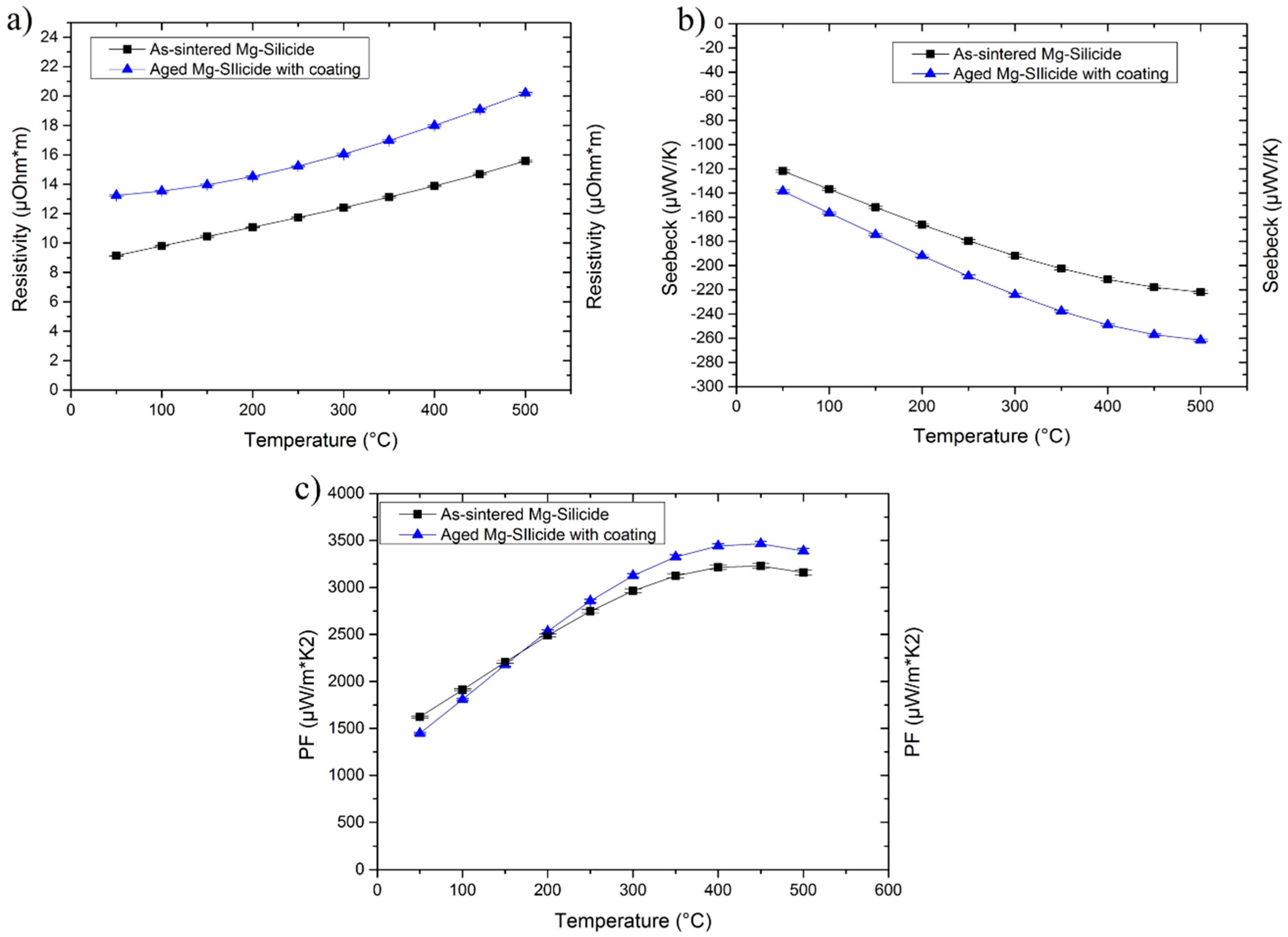

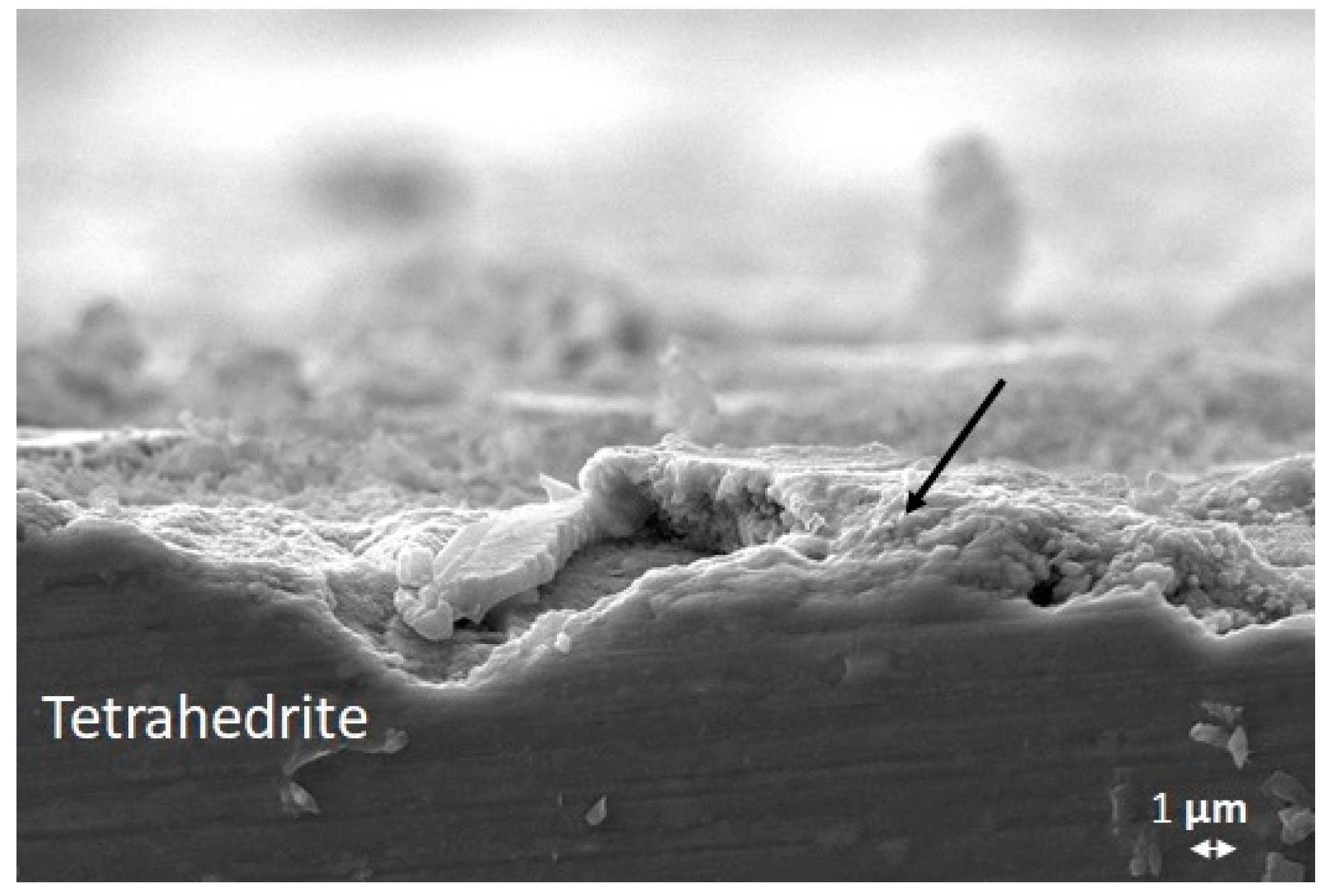

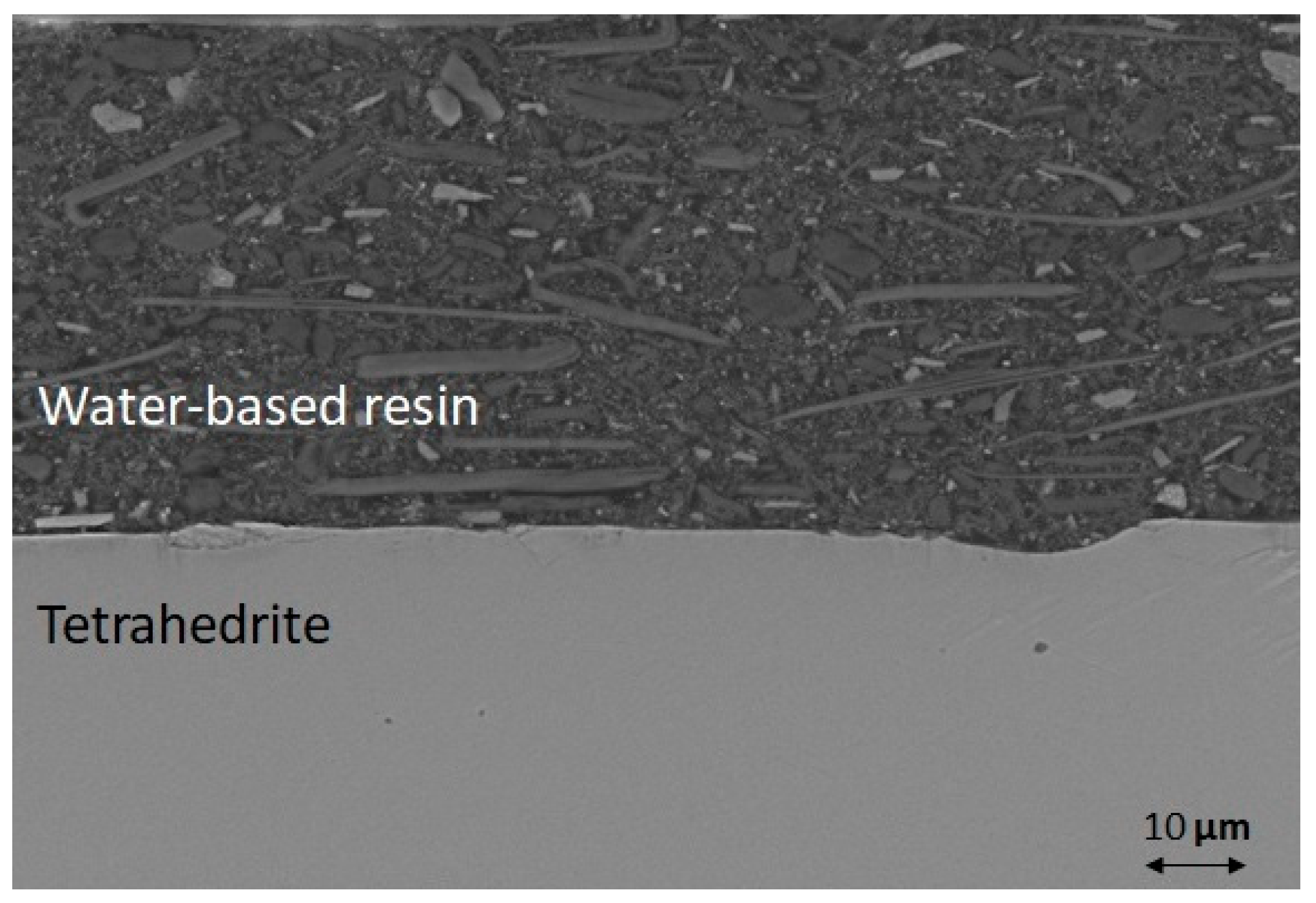
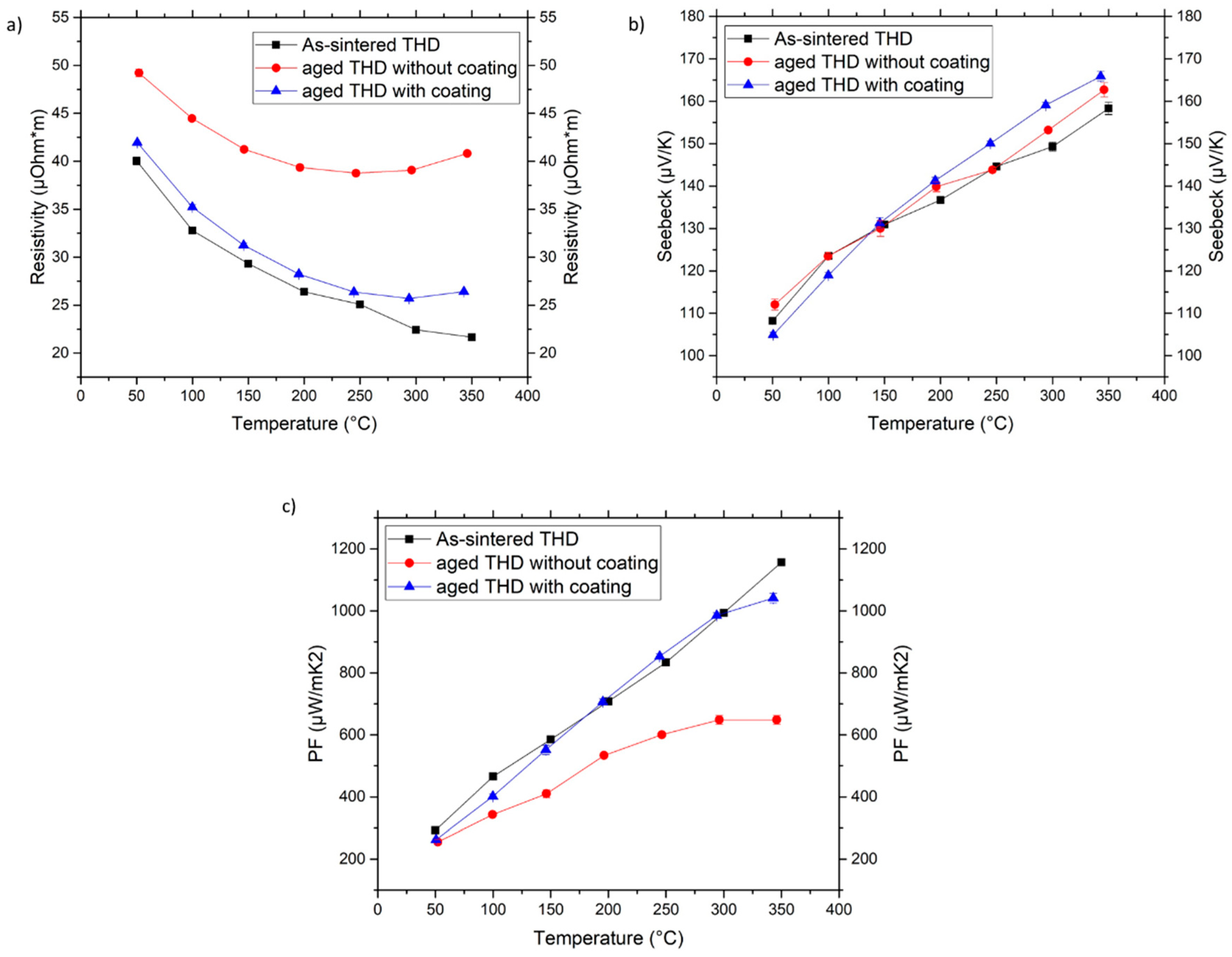
© 2019 by the authors. Licensee MDPI, Basel, Switzerland. This article is an open access article distributed under the terms and conditions of the Creative Commons Attribution (CC BY) license (http://creativecommons.org/licenses/by/4.0/).
Share and Cite
Gucci, F.; D’Isanto, F.; Zhang, R.; Reece, M.J.; Smeacetto, F.; Salvo, M. Oxidation Protective Hybrid Coating for Thermoelectric Materials. Materials 2019, 12, 573. https://doi.org/10.3390/ma12040573
Gucci F, D’Isanto F, Zhang R, Reece MJ, Smeacetto F, Salvo M. Oxidation Protective Hybrid Coating for Thermoelectric Materials. Materials. 2019; 12(4):573. https://doi.org/10.3390/ma12040573
Chicago/Turabian StyleGucci, Francesco, Fabiana D’Isanto, Ruizhi Zhang, Michael J. Reece, Federico Smeacetto, and Milena Salvo. 2019. "Oxidation Protective Hybrid Coating for Thermoelectric Materials" Materials 12, no. 4: 573. https://doi.org/10.3390/ma12040573




